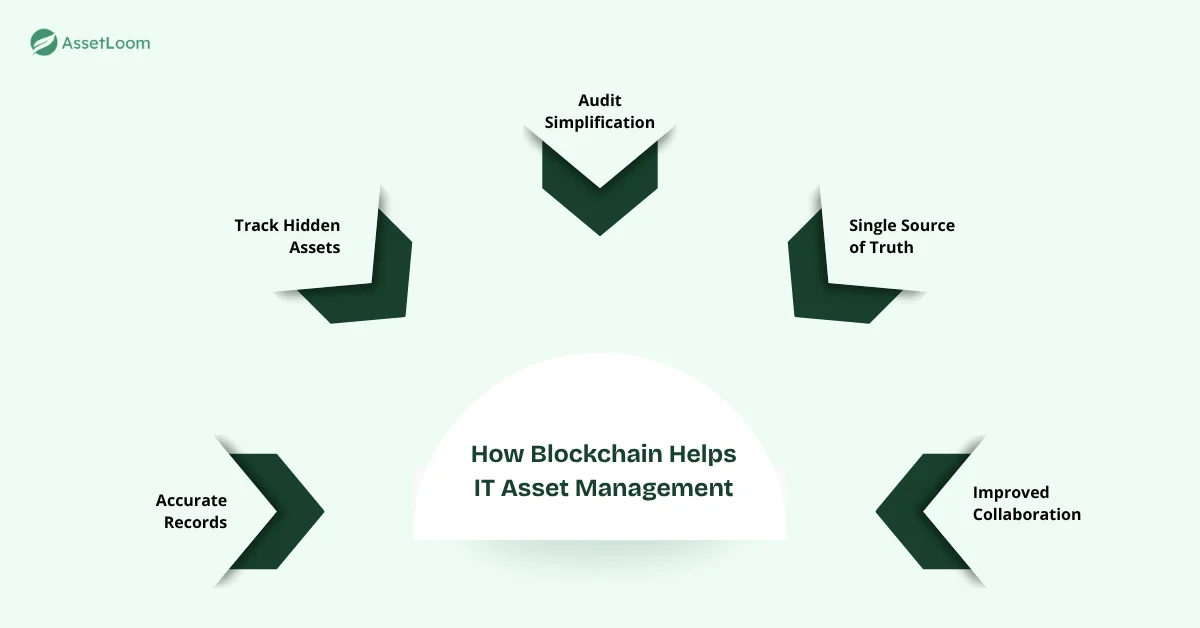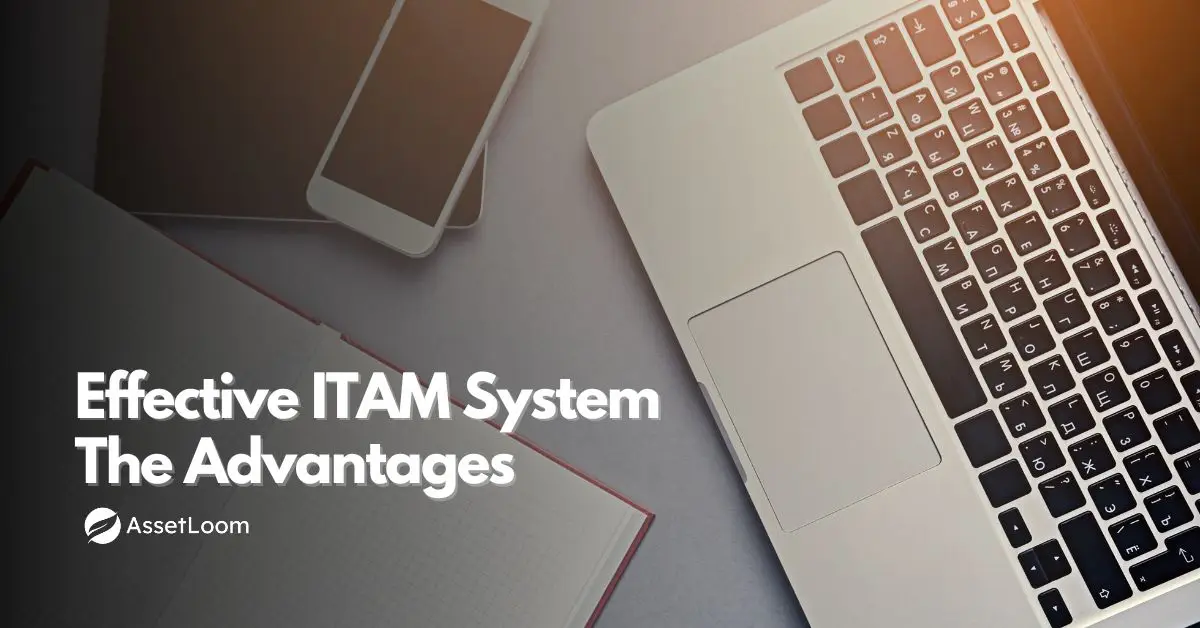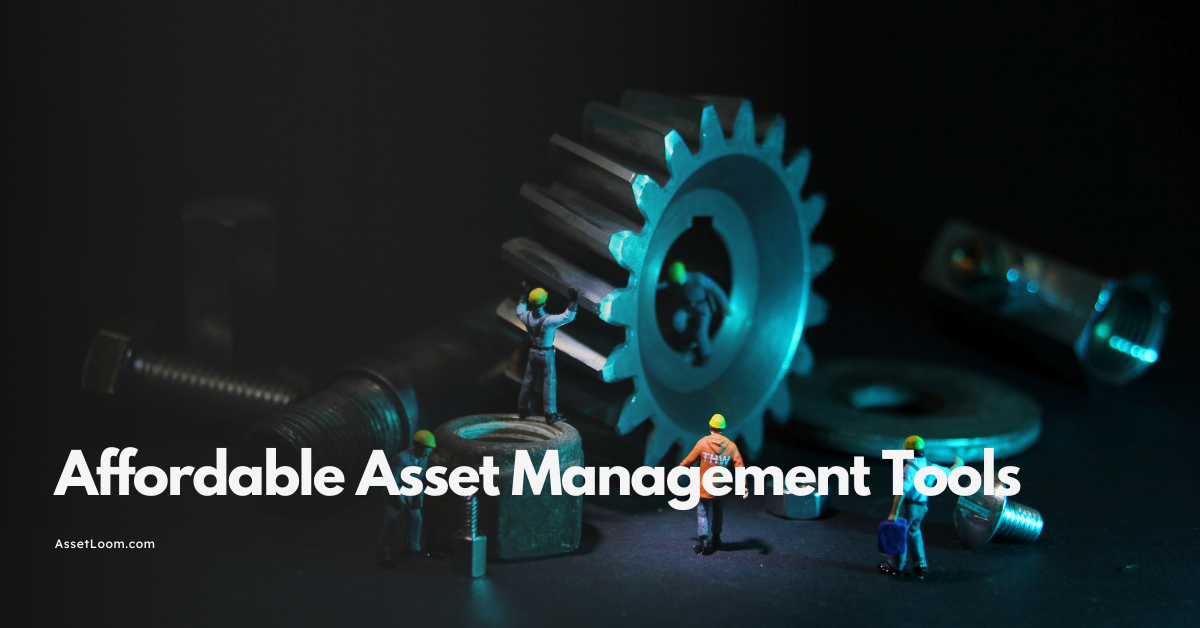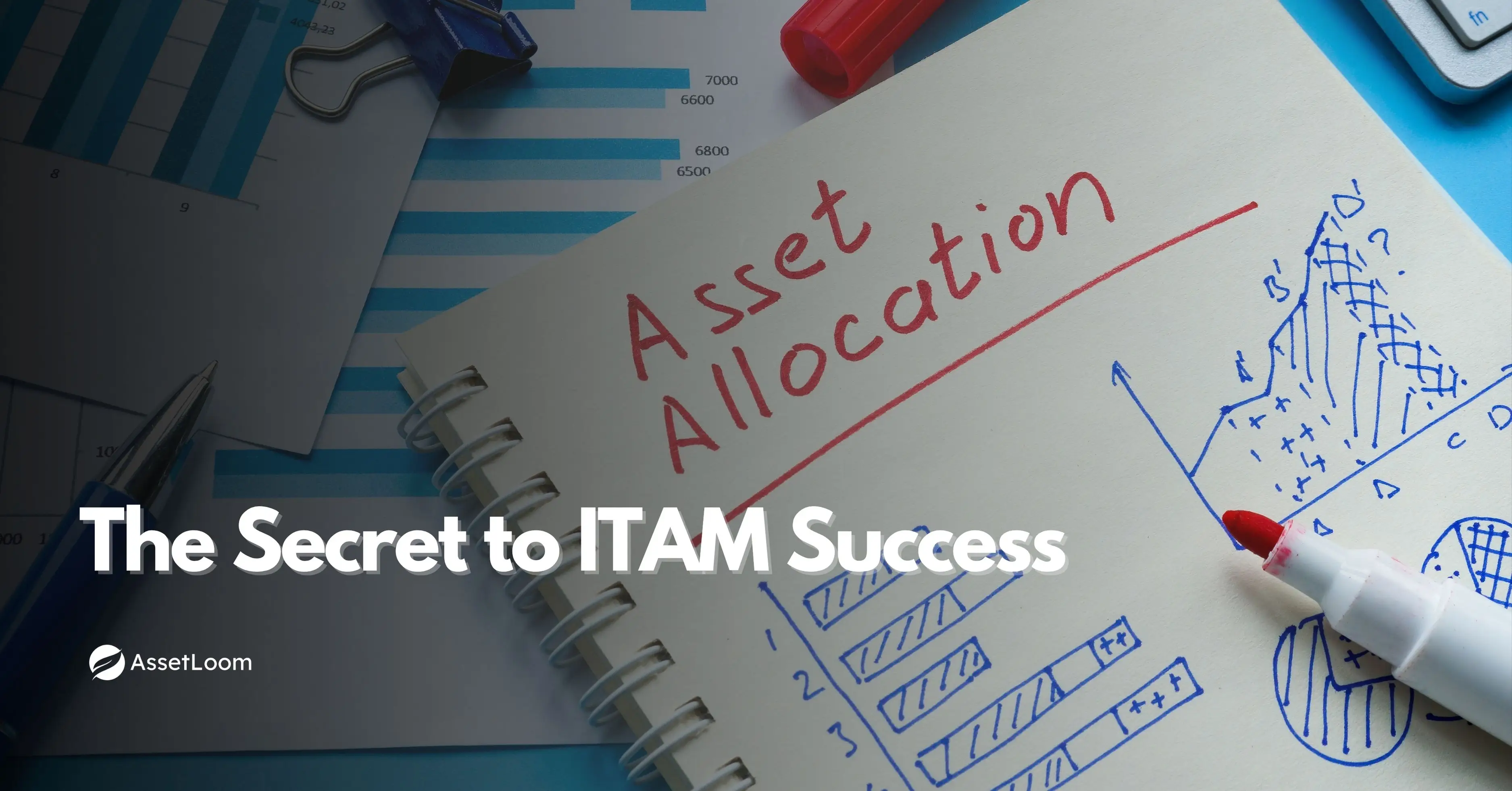Blockchain for IT Asset Management: Is It the Future?
See how Blockchain for IT Asset Management improves visibility, ensures trusted records, and streamlines asset tracking.
The management of IT assets is not getting any easier. It’s tough to keep track of what hardware or software is available, where it is being used, and whether it is up to date in today’s remote work environment, cloud services, and constant change.
If you’ve ever had to find out who is using a device, sift through emails to locate a license key, or rush to prepare for an audit, you are not alone. Spreadsheets and other traditional tools can no longer handle these common headaches.
At this point, blockchain becomes interesting, not in a flashy cryptocurrency way, but as a practical solution to typical problems with IT asset management.
What Is Blockchain? A Simple Explanation
Blockchain is more than just cryptocurrency. Fundamentally, it is a digital, safe method of data recording and sharing. Consider a digital ledger that records each update or transaction as a series of time-stamped blocks. Anything that is added stays there. It cannot be removed or altered.
What makes it useful for IT asset management is that this ledger is not stored in just one place. It is shared across a network, so everyone involved, whether it’s IT, procurement, or finance, sees the same version of the truth. This means no more guessing which spreadsheet is most current or who made the last update.
These records establish inherent trust because they are locked in and validated. Every time an asset is retired, serviced, or moved, the event is automatically recorded in a trustworthy and long-lasting history.
For instance, suppose a new hire was given a laptop. With blockchain, the assignment is immediately documented, along with the device's complete history, who authorized it, and when it occurred. No one has to search through old records or follow up on emails when it comes time for an audit or offboarding months later. The entire trail is already in place, accurate, transparent, and widely trusted.
You don’t need to dive into the technical side. What matters is that blockchain offers a smarter, more trustworthy way to track assets with less hassle and more confidence.
Common Challenges in IT Asset Tracking Today
IT teams are responsible for knowing what assets the company owns, where those assets are, and who’s using them. But that’s easier said than done, especially when tools and records are disconnected or outdated.
1. Inaccurate or Outdated Records
It’s easy for asset records to fall out of sync. Maybe someone forgot to update a spreadsheet when a laptop was reassigned. Maybe a status change wasn’t logged after a repair. Over time, small gaps like these lead to big confusion.
You end up second-guessing your reports, double-checking with team members, or wasting time chasing down missing details.
2. Untracked Assets and Shadow IT
Sometimes assets don’t follow the official process. A department orders a few extra laptops. Someone signs up for software without looping in IT. These things happen, but they make tracking harder and introduce security risks.
If an asset isn’t on your radar, you can’t manage or protect it properly.
3. Time-Consuming, Stressful Audits
Although they shouldn't, audits frequently feel like fire drills. It can take hours or even days to find the correct information, verify ownership, and provide maintenance records. And the pressure only increases if something is absent.
4. Siloed Teams and Conflicting Records
Devices may be tracked by IT. Orders are tracked by procurement. Depreciation is tracked by finance. Conflicting information can easily arise when each team uses its own tools. While some believe an asset is still in use, others claim it was retired.
How Blockchain Can Help Fix These Problems
Blockchain can greatly enhance your IT asset management process, but it won't replace it right away. Consider it a behind-the-scenes improvement that infuses each stage of the asset lifecycle with consistency, clarity, and trust.
Here are some examples of how blockchain works in practice to address the main ITAM issues of today.
1. Keeps Records Accurate Without Manual Effort
The majority of asset tracking systems rely on users remembering to keep them updated. The asset's record becomes instantly outdated when someone neglects to log a change. There is a major issue if this occurs with hundreds or even thousands of assets.
Blockchain records all asset events in real-time tracking, keeping them for all time. An asset cannot be altered once it has been assigned, moved, serviced, or retired; these actions are recorded with a timestamp. There is no chance of someone inadvertently erasing a record or changing earlier data.
Clear Steps:
- The blockchain immediately records the reassignment of an asset.
- Each update details the change, when it occurred, and who made it.
- All authorized users can see it, so there's no need to rely on a spreadsheet or a central admin.
2. Makes Hidden Assets Visible and Trackable
The prevalence of shadow IT is higher than most teams realize. Assets can easily go unnoticed, whether a department purchases its own hardware or a new employee downloads tools without authorization. These holes lead to financial asset risks and security vulnerabilities.
An asset can be added to the blockchain as soon as it is found, even if it does not enter the system via the formal procurement procedure. Every event pertaining to the asset is then monitored and made public throughout the company.
Clear Steps:
- Once a new device is acquired by any team, it’s registered in the blockchain ledger.
- The record includes purchase details, who logged it, and any associated documents.
- Even if IT wasn’t involved at first, they can now see and manage the asset from that point forward.
3. Simplifies Audits With Built-In Transparency
Audits frequently devolve into a mad dash to gather and validate information. To confirm what happened to each asset, the finance and IT teams spend hours going through emails, ticket logs, and spreadsheets. Blockchain automatically generates audit trails for every asset. Purchase dates, handoffs, service logs, and retirement status are all recorded in one place. The history doesn't have to be put together by hand.
For instance, you don't need to call around or check several systems if you are asked to provide the complete lifecycle of five devices during an audit. A clear, time-stamped record for every device can be displayed instantly by simply pulling the blockchain ledger.
4. Gives All Teams Access to the Same Trusted Data
Different departments often use different systems and data. This creates conflicting asset records, confusion about ownership, and wasted time trying to coordinate efforts.
Blockchain serves as a single source of truth that all teams can depend on. Whether it's IT, finance, or procurement, everyone has access to the same real-time information about each asset.
Clear Steps:
- Every department has real-time access to the same blockchain-based record set.
- Sensitive financial or security information is kept safe thanks to permissions.
- There is no longer any guesswork; everyone bases their decisions on precise, synchronized data.
You don't have to abandon your present asset management procedures in order to use blockchain. Rather, it makes them stronger by giving your data a reliable, up-to-date, and long-lasting foundation.
Here’s what your team gains:
- Accurate records without extra effort
- Complete visibility, even for previously untracked assets
- Audit readiness is built into the system
- Better collaboration between departments
More than anything, blockchain removes the guesswork from IT asset management. You no longer have to ask, "Is this data correct?" You’ll already know it is.

Benefits of Blockchain for IT Asset Management Teams
Blockchain is more than just a future trend or security. It offers genuine, useful advantages that simplify, clean, and increase the dependability of daily asset management. Here's an example of that in action.
- A Permanent and Unambiguous Asset History: Whenever an asset is assigned, serviced, moved, or retired, something happens to it. It is automatically captured. You can never forget what happened or when it happened because that history cannot be altered or erased.
- Everybody sees the same data: Version conflicts and second-guessing reports are eliminated. You're looking at the same current record whether you work in finance, procurement, or IT. This keeps everyone on the same page and helps to clear up any confusion.
- Smarter Processes with Automation: You can set rules that take care of routine actions. For example, when a device reaches the end of its useful life, the system can automatically flag it for disposal or replacement. No reminders needed.
- Audits Without the Scramble: Since every change is time-stamped and stored, you’re always ready for an audit. You don’t need to dig through spreadsheets or pull together reports at the last minute. The full record is already there, accurate and complete.
- Less Manual Work for Everyone: Your team will spend less time entering data and fixing errors when asset updates are reliable and automated. This translates into more time for the work that truly makes things happen.
- Improved Teamwork: Communication becomes simpler when all parties have access to the same trustworthy data. Procurement is aware of what is coming, finance is aware of what has been spent, and IT is aware of what has been deployed. Cross-referencing or double-checking between systems is not necessary.
Is Blockchain a Practical Future for Asset Management?
Blockchain is still developing in IT asset management, but it's gaining real momentum. While it isn't widely adopted yet, it's already being used in areas like supply chain and logistics, where trust, traceability, and accuracy are essential.
For organizations managing distributed assets, working across departments, or handling regular audits, blockchain is a strong option. It provides structure and visibility where traditional systems fall short.
There are some challenges. Cost, technical knowledge, and platform readiness are legitimate worries. However, those barriers are starting to shrink as more vendors innovate and more teams explore what’s possible.
You don’t have to leap in all at once. A smart approach is to start small, test it with specific use cases, and prepare your team gradually. This way, you’ll be ready as the technology continues to improve.
=> IT Asset Management Trends 2025: What IT Teams Need to Prepare For
Final Thoughts
Blockchain technology is evolving from a futuristic idea to a reality. The advantages of trusted records, increased visibility, enhanced teamwork, and less time spent looking for information are clear, even though it may not be widely used in IT asset management just yet.
For teams hoping to eliminate spreadsheets, reduce audit stress, and develop more reliable systems, blockchain is worth looking into. Today doesn't require a total overhaul. But if you start the conversation now, your team will be more prepared to adapt as technology develops.
At its core, blockchain is about transparency, accountability, and trust. And that is desperately needed in today's IT asset management.
Frequently Asked Questions
1. How does blockchain improve IT asset management?
Blockchain creates a permanent, tamper-proof record for every asset event, giving teams accurate, real-time data and reducing manual tracking errors.
2. Can blockchain help with audits?
Yes. Every asset action is automatically time-stamped and stored, so audits are faster, simpler, and stress-free.
3. Do all departments benefit from blockchain in ITAM?
Absolutely. IT, finance, and procurement all access the same trusted data, which improves collaboration and ensures everyone is on the same page.

Subscribe for Expert Tips and Updates
Receive the latest news from AssetLoom, right in your inbox.


